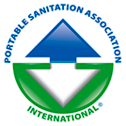How Often Should Septic Holding Tanks Be Pumped?
Septic holding tanks are an integral part of properties without access to municipal sewage systems and are responsible for managing wastewater efficiently.
Maintenance of these tanks is imperative to ensure a septic system’s proper functioning while preventing costly repairs. The pivotal question in septic tank maintenance is how often they should be pumped.
This post will explain the multifaceted aspects of septic tank pumping frequency. By the time you’ve finished this article, you’ll understand the influencing factors and be able to establish a well-informed pumping schedule for maintaining a reliable septic system.
Septic Holding Tanks
These septic tanks are strategically buried containers designed to serve as the initial recipients of household wastewater. They perform a crucial role in the wastewater treatment process by segregating solid waste from liquid waste.
The solids settle at the tank’s bottom, while the liquids, known as effluent, flow into the drain field. Over time, regular pumping and plumbing maintenance becomes necessary to ensure the efficiency and functionality of the entire septic system.
Factors Influencing Pumping Frequency
Several factors interplay when considering the frequency of septic tank pumping. It is not a one-size-fits-all scenario, as various households have diverse demands and distinct tank sizes.
It is imperative to consider the following variables while determining your septic tank’s pumping schedule.
Tank Size
The size of your septic tank stands as a prominent determinant of the required pumping frequency.
Larger tanks have the capacity to hold more waste before demanding maintenance, while smaller tanks might necessitate more frequent pump-outs. To accurately assess the ideal pumping interval, consulting the tank’s specifications or seeking professional guidance is essential.
Household Size
The number of individuals residing in your household significantly affects the rate at which your septic tank fills up.
A greater number of occupants translates into increased wastewater generation, imposing a heavier load on the septic system. In most cases, larger households are inclined towards more frequent pumping, while smaller households can typically extend the duration between pump-outs.
Water Usage
Water consumption habits within a household play a pivotal role in septic tank maintenance. Excessive water usage (e.g., indulging in lengthy showers, frequent laundry loads, and running the dishwasher frequently) can expedite the rate at which the tank fills up.
To extend the time between pumpings, adopting water-saving practices is highly recommended.
Solid Waste Generation
The quantity of solid waste produced by your household significantly influences septic tank maintenance.
Make sure that you do not flush non-biodegradable items. This included things like:
- Sanitary products
- Wipes
- Oils grease
- Cloth
- Diapers
Non-biodegradable items do not break down in water, increasing the risk of clogged pipes and the frequency with which you should get your septic tank pumped.
General Guidelines for Pumping Frequency
While the aforementioned factors carry substantial weight in influencing septic tank pumping schedules, it is equally important to adhere to general guidelines to determine the ideal frequency for your septic tank.
Here is how to figure it out.
Annual Inspections
Incorporating regular annual inspections of your septic tank into your maintenance routine is a prudent decision. These inspections enable you to evaluate your tank’s condition and assess whether pumping is necessary.
Collaborating with a professional septic service provider for this annual check-up can be instrumental in identifying potential issues before they escalate into significant problems.
Monitoring Sludge and Scum Levels
Septic tanks are structured with two distinct layers – scum at the top and sludge at the bottom. The space in between is occupied by clear, treated effluent.
As a general rule of thumb, when the combined layers of sludge and scum reach approximately one-third of the tank’s capacity, it is time to schedule a pump-out. Ignoring this guideline may lead to blockages, backups, and even total system failure.
Recommended Pumping Every 3-5 Years
On average, the majority of households should plan to pump their septic tanks every 3 to 5 years. However, it is crucial to note that this is a general estimate, and your specific situation may vary.
Regular inspections, as previously mentioned, will serve as the guiding compass, helping you determine the ideal frequency for your tank based on its condition and usage.
Environmental Impact of Septic Tank Pumping
Beyond the functional aspects of septic tank maintenance, it’s essential to consider the environmental impact of septic tank pumping.
Septic systems can have a significant effect on the surrounding environment, and responsible pumping practices are crucial.
Nutrient Loading
Excessively frequent septic tank pumping can result in an increased influx of nutrients, particularly nitrogen and phosphorus, into the local environment. When these nutrients leach into the soil or nearby water bodies, they can lead to water pollution, algae blooms, and imbalances in ecosystems.
To mitigate nutrient loading, it’s essential to strike a balance between regular maintenance and environmental responsibility.
Algae blooms are particularly damaging to ecosystems, so it’s important to be vigilant when the signs appear.
Groundwater Contamination
Inadequate septic tank maintenance, such as infrequent pumping, can result in septic system failures. When septic systems fail, they pose a risk of contaminating groundwater with harmful bacteria and pathogens.
This groundwater contamination can have severe consequences on public health and the environment. It’s vital to prioritize regular pumping to prevent system failures and the associated risks.
Impact on Local Ecosystems
Septic systems are often situated in close proximity to natural ecosystems, including rivers, lakes, and wetlands. Improperly maintained septic tanks can release pollutants into these sensitive areas. This adversely affects the local flora and fauna.
By adhering to a reasonable pumping schedule, homeowners can minimize the impact on their surrounding ecosystems and help maintain ecological balance.
Don’t Wait for Your Septic Holding Tanks to Be Pumped
Maintaining your septic holding tank is paramount, not only to ensure the proper functioning of your septic system but also to prevent costly repairs and maintain the health and hygiene of your property.
The frequency of septic tank pumping is contingent on various factors, including tank size, household size, water consumption patterns, and solid waste generation.
Regular pumping services allow septic tanks to last longer and encounter fewer problems. Don’t delay in getting this job done. Contact J Bar Enterprises today to schedule service today!





